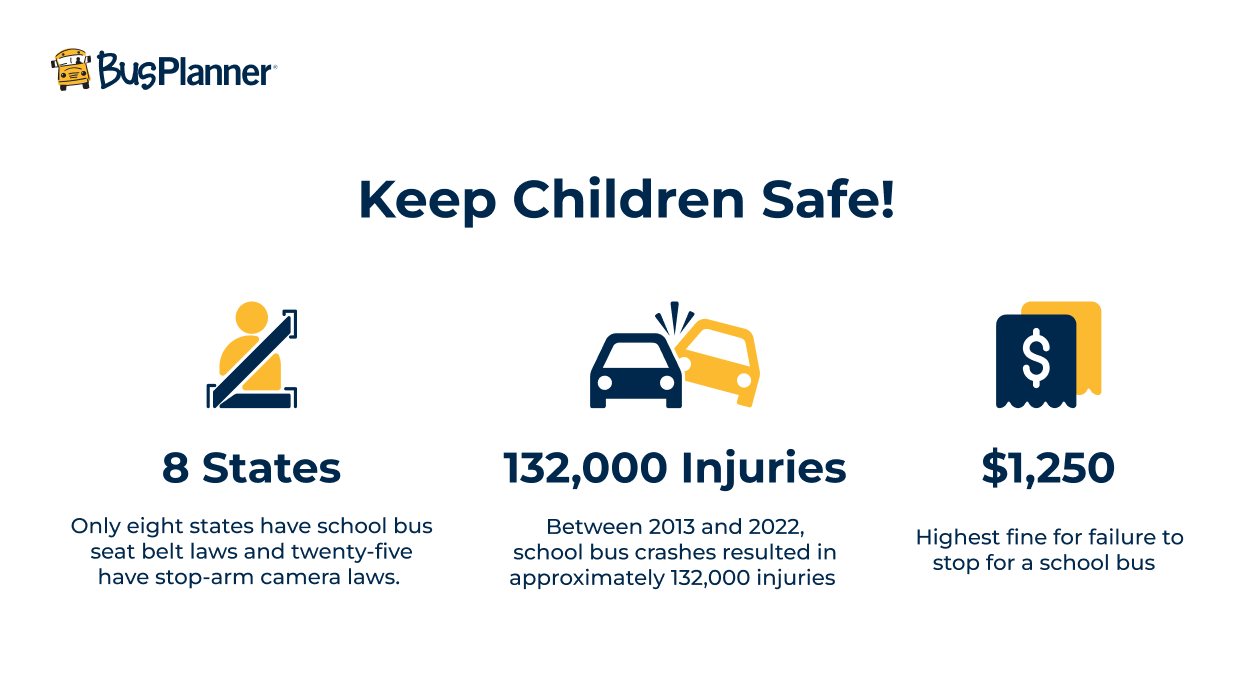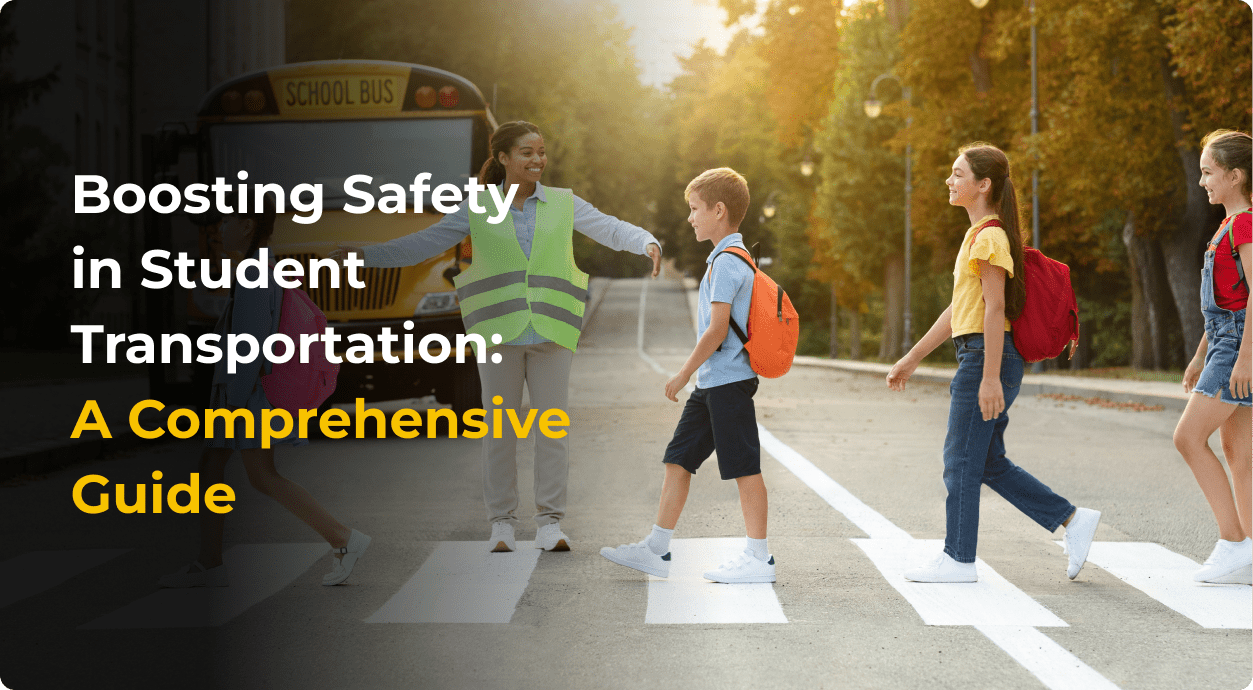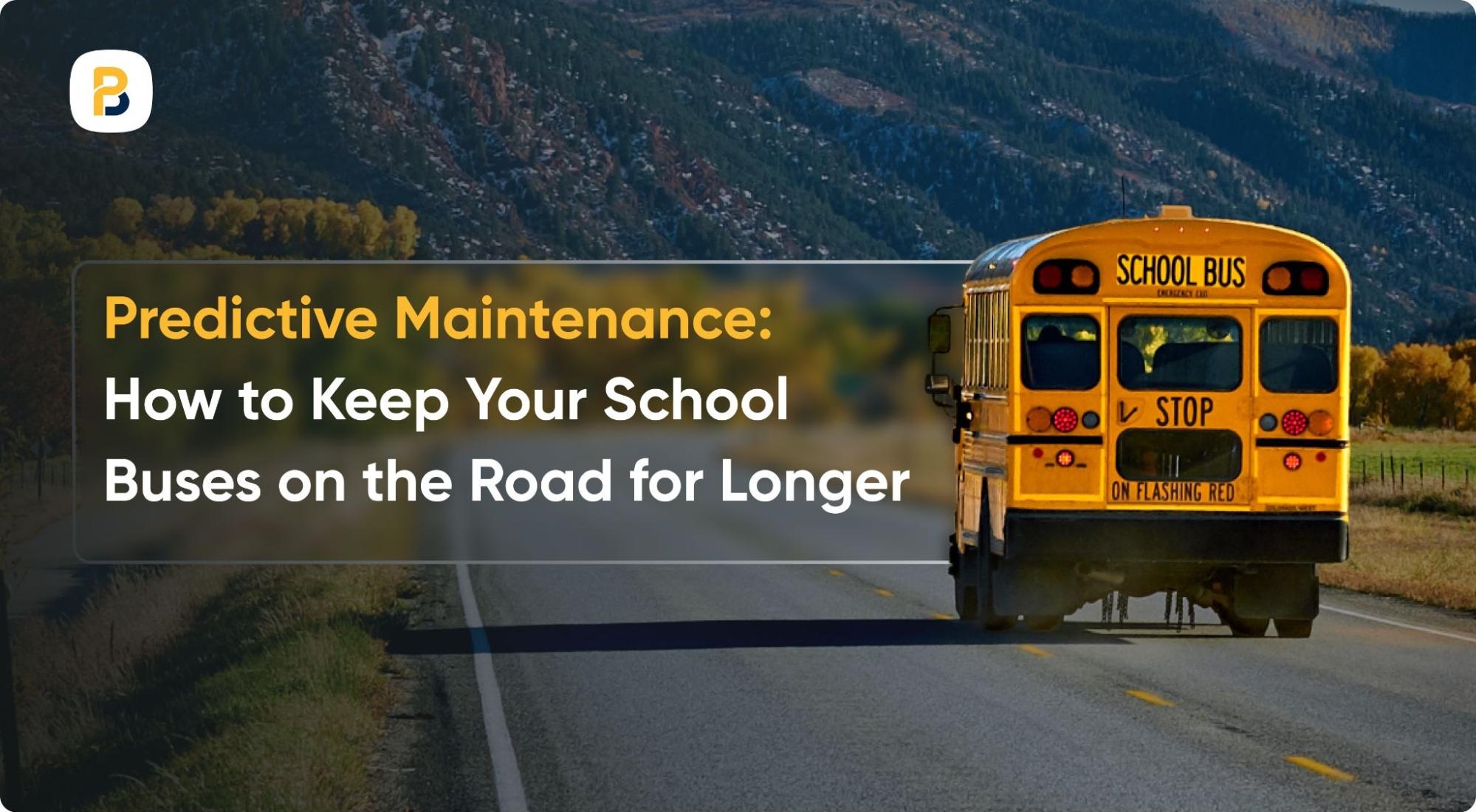It’s frightening to know that around 6 children die in school bus crashes every year, which highlights the importance of safety in transportation. To help you avoid such tragedies, we’ve put together a guide that will help you improve student safety in your school district.
Thorough Driver Screening and Training
- Background Checks: Implementing strict background checks ensures drivers have no criminal history or substance abuse issues. This is critical in providing parents with peace of mind regarding their children’s safety.
- Comprehensive Driver Training : Drivers should undergo extensive training, covering safe driving techniques, managing student behavior, and emergency protocols like evacuation procedures. School districts should also provide regular refresher courses, especially when laws or safety standards change.
- Medical Examinations : Requiring drivers to pass medical exams ensures they are physically and mentally capable of operating large vehicles safely.
Vehicle Maintenance and Inspections
- Regular Inspections: Buses should undergo routine checks that examine brakes, tires, lights, and safety equipment like first-aid kits. These inspections help prevent breakdowns and ensure that buses are up to standard.
- Timely Repairs : Any identified issues should be addressed promptly, ensuring that buses are in top condition before students board. Establish a clear system for reporting and addressing maintenance needs, with fleet management software and ensure your buses spend more time on the road than in the shop.
Adopt Technology to Improve Safety
Gone are the days of solely relying on the word of transportation operators. Innovative software can report on various matters such as speed-tracking, bus route tracking, student pick-ups and drop-offs.
- GPS Tracking and Route Optimization: Installing GPS systems on buses allows schools and parents to track buses in real-time. School bus routing software can boost efficiency on routes by reducing travel time, and it decreases the risk of incidents by avoiding congested areas or hazardous routes.
- Video Surveillance: Cameras inside buses help monitor student behavior, external cameras, and fining systems for external monitoring. It also creates a reliable record of accidents or incidents, ensuring accountability for both drivers and students.
Policies and Communication
Communicating safety protocols and procedures with all stakeholders is important to hold accountability and awareness of what needs to be done in situations of emergency.
- Bus Safety Rules: Schools should create clear, easy-to-understand bus safety rules for students. These should include guidelines for boarding, sitting, and behavior during the ride. Distributing these rules to parents and discussing them in the classroom ensures students know what’s expected of them.
- Emergency Procedures: Schools must have well-established emergency procedures for incidents like accidents, bus breakdowns, or severe weather. Drivers should be trained to handle these situations calmly, ensuring the safety.

Student Behavior Management
Student discipline runs beyond the classroom. Their behavior is crucial to what extent a bus driver can focus while transporting them.
- Bus Monitors: Students can be assigned as bus monitors. Keeping students' behavior in check and ensuring they follow safety protocols such as wearing seat belts and not moving around in a moving vehicle.
- Bus Protocols: Safety procedures for getting on and off the bus, what to do in case of an emergency. Emphasizing the importance of safety by clearly defining the consequences of violating the rules.
Parental Involvement
- Safety Education at Home: Safety begins at home! Parents can help educate their children about the dangers of crossing roads dangerously, distracting the driver and moving about while the bus is moving.
- Monitoring Drop-Off and Pick-Up Points: Parents should ensure they are present at drop-off and pick-up points, especially for younger children. With the help of bus route optimizing software parents can be up to date about exactly when to be present at drop-off points or if there has been a change in the route.
Investing in School Bus Routing Software
School bus routing software is an advanced solution that helps schools run their school bus service as smoothly as possible, improving operational efficiency but also boosting safety.
- Fewer Buses, Safer Routes: Route optimization software can reduce the number of buses needed. It would also streamline routes, minimize travel time, decrease fuel consumption, and reduce the likelihood of traffic related accidents.
- Less Overhead, More Resources for Safety: Schools can save money by cutting unnecessary routes, which can be used to reinvest in safety measures like keeping up with bus maintenance, driver training, and better resources. For instance, Greater St. Albert Roman Catholic Schools saved money by using BusPlanner, a student transportation management suite, and reinvested those savings into safety equipment like radars and cameras.
Final Thoughts
Boosting safety in student transportation requires a comprehensive approach that includes driver training, vehicle maintenance, modern technology, clear policies, and strong communication. Parents, drivers, and schools must work together to ensure students transportation is made as safe as possible.







